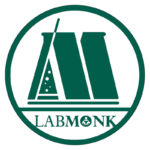[ps2id id=’background’ target=”/]
BACKGROUND
Bile through cytochrome p450 synthesizes primary bile acids contains bile salts which is produced in liver which gets conjugated with glycine or taurine forming conjugated bile acids or bile salts and secreted in lumen by partial dehydroxilation with removal of glycine forming secondary bile acids and unconjugated bile acids which becomes insoluble in water.1 These are absorbed and again secreted in liver via blood.
The basic motive of the test is to find the presence of bile salts in the given urine sample.
[ps2id id=’requirements’ target=”/]
REQUIREMENTS
Sample: Urine sample
Chemicals: Barium chloride – 10 gm/dl
Fouchet’s Reagent
Sulphur powder
Acetic acid
Sulphur Powder
Apparatus: Test tube
Filter paper
Centrifuge tubes
Pasteur pipette
Test tube (15 x125)
[ps2id id=’procedure’ target=”/]
PROCEDURE
Fouchet’s test
2 drops of Acetic acid is added with urine, if it is alkaline or neutral. A 5 ml of the acetic urine is taken in a test tube adding 5 ml of barium chloride by using Pasteur pipette, as there will be a combination with sulphate radicles. Mixing it well, centrifuge at 1500 RPM for 10 -15 minutes and filtering for its precipitate (adhering large molecules) by adding a drop of Fouchet’s reagent, where the ferric chloride which oxidises the trichloro acetic acid changing from yellow bilirubin to green biliverdin and placing a filter paper to precipitate.2
Hay’s test
In a test tube a 10 ml of urine is taken and if there is presence of bile salts then the surface tension will be lowered in it and a small amount of sulphur powder is sprinkled over it. If the powder sinks to the tube’s bottom. But if it had been normal urine the powder will float.2
[ps2id id=’conclusion’ target=”/]
CONCLUSION
In Fouchet’s test, green or blue colour change on the filter paper is noted when the bile pigments are present.
In Hay’s test, the test shows positive result by sinking the presence of bile salts is confirmed.
[ps2id id=’references’ target=”/][ps2id id=’1′ target=”/]
REFERENCES
-
Bile salts: definition, functions, enterohepatic circulation, synthesis. Available: http://www.tuscany-diet.net/2016/08/14/bile-salts-definition-function-synthesis. Accessed on 20 April 2018.
-
Test for bile pigments in urine. https://taniloy.wordpress.com/2013/11/24/test-for-bile-pigments-in-urine/. Accessed on 20 April 2018.



